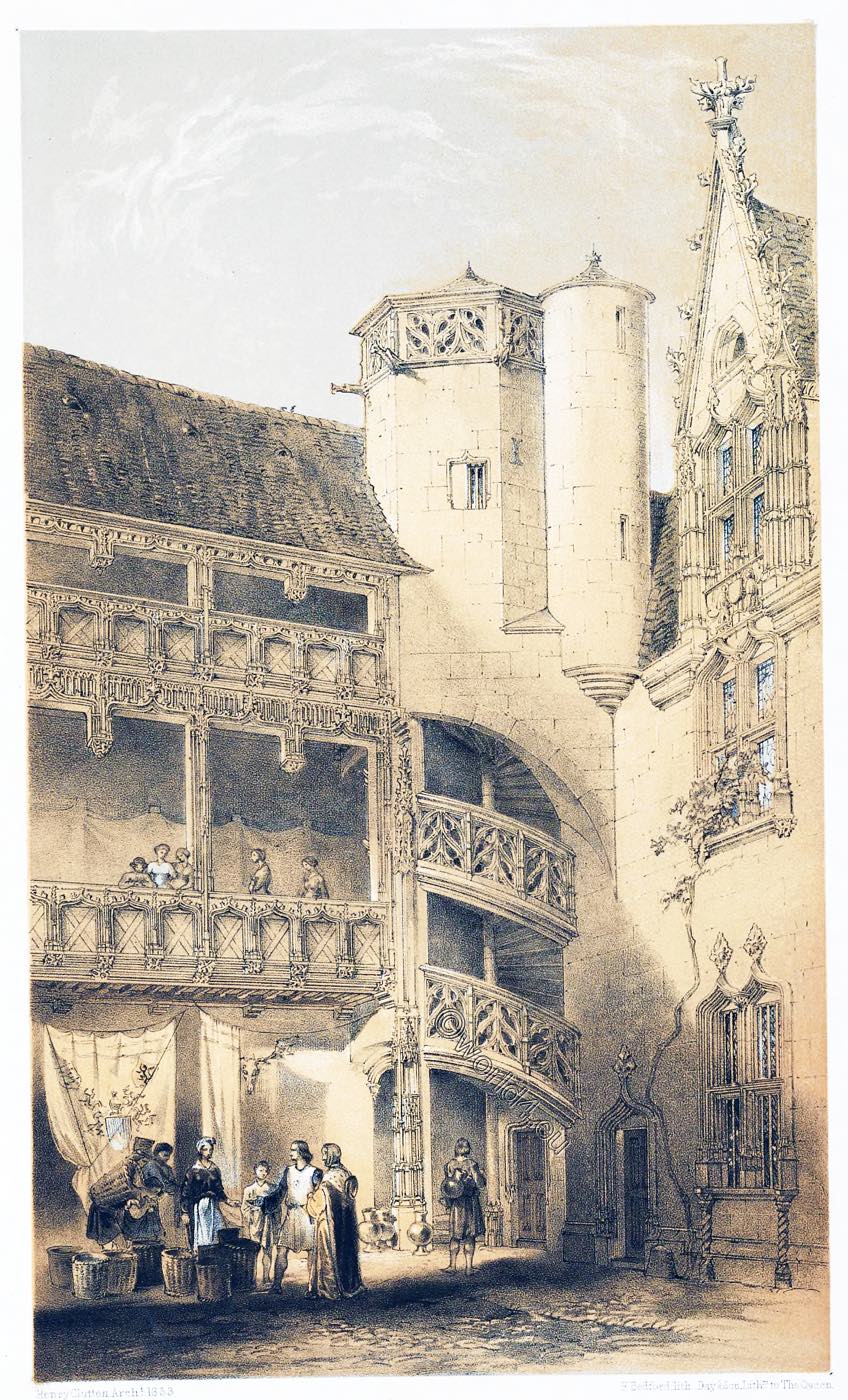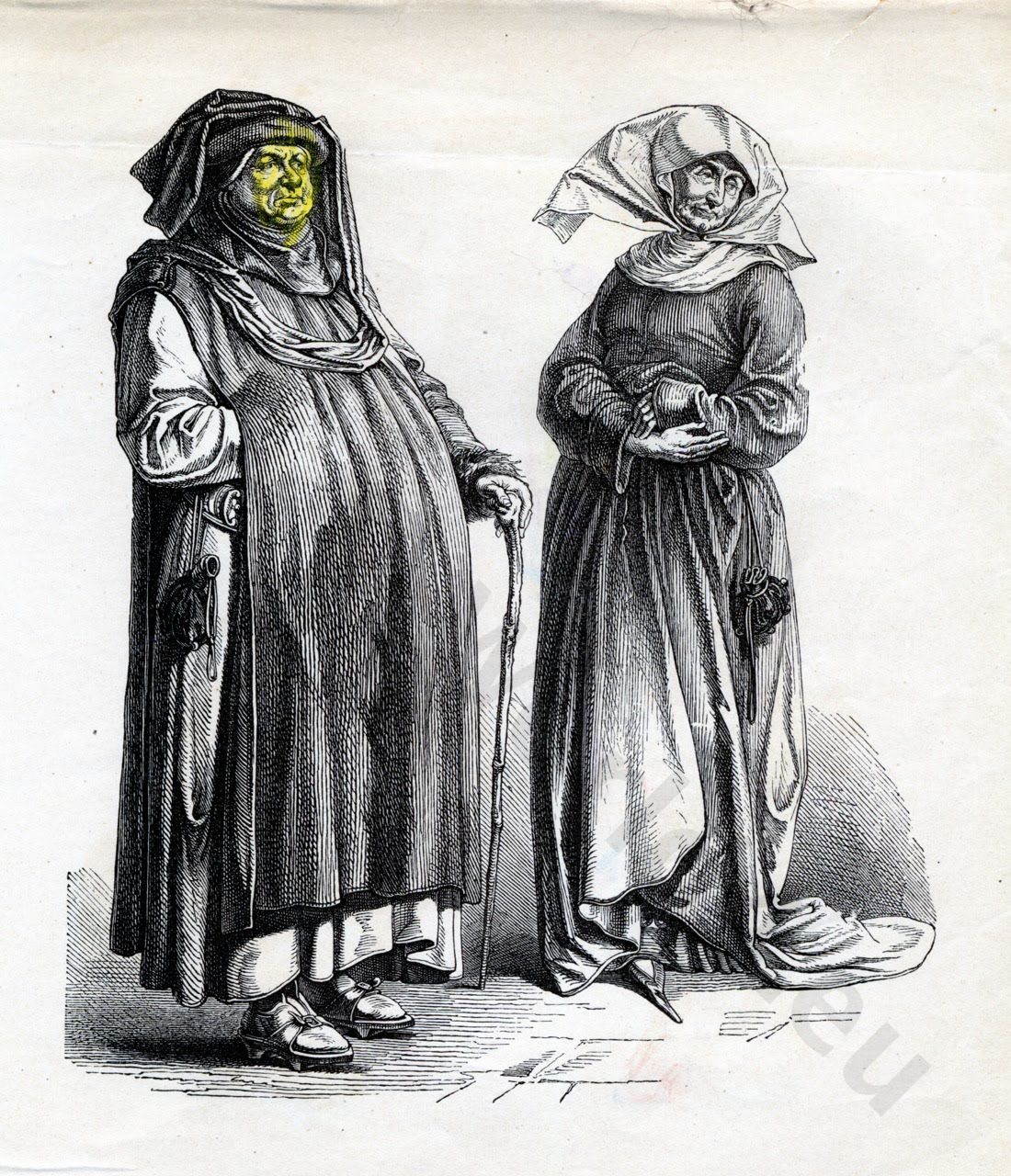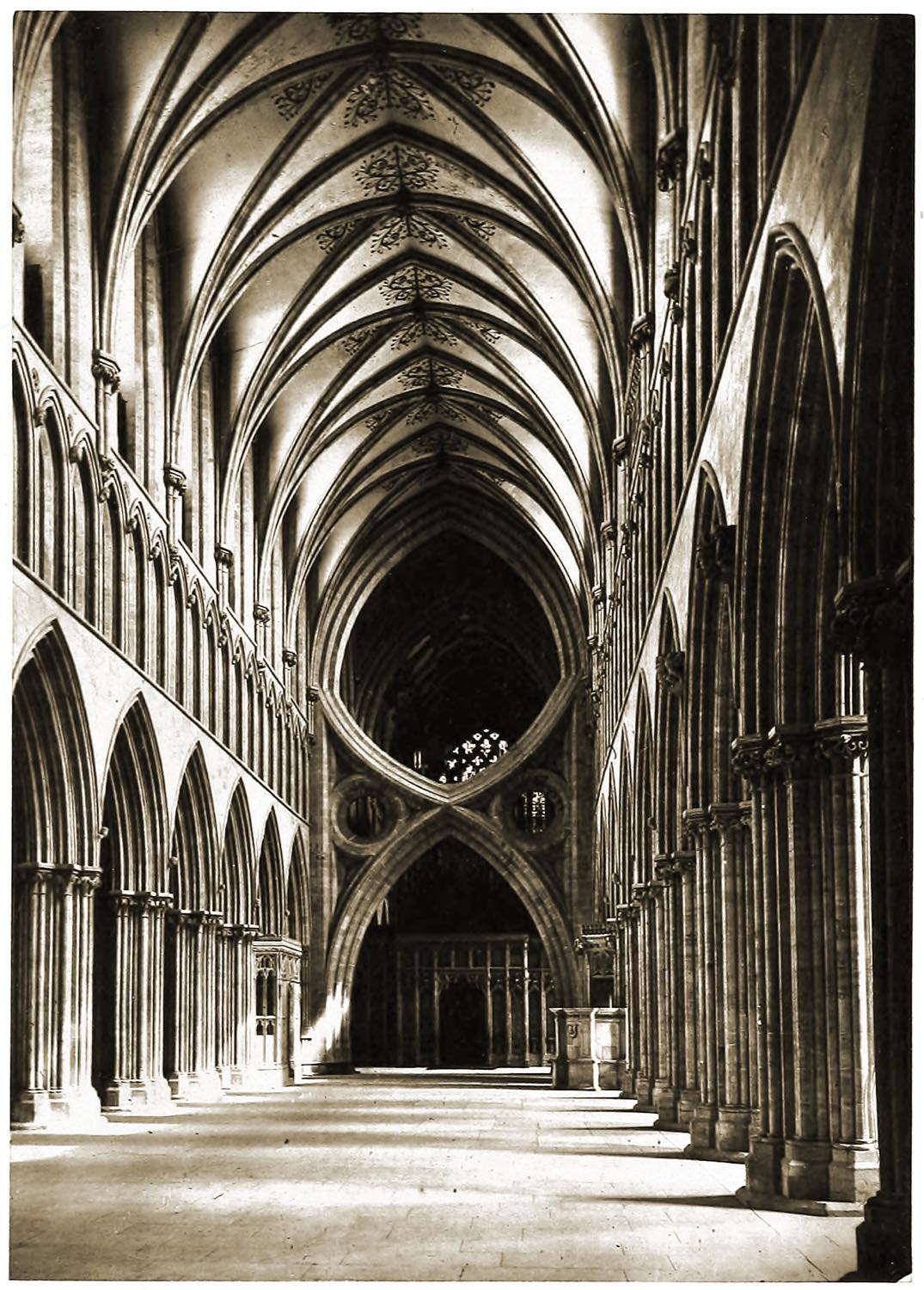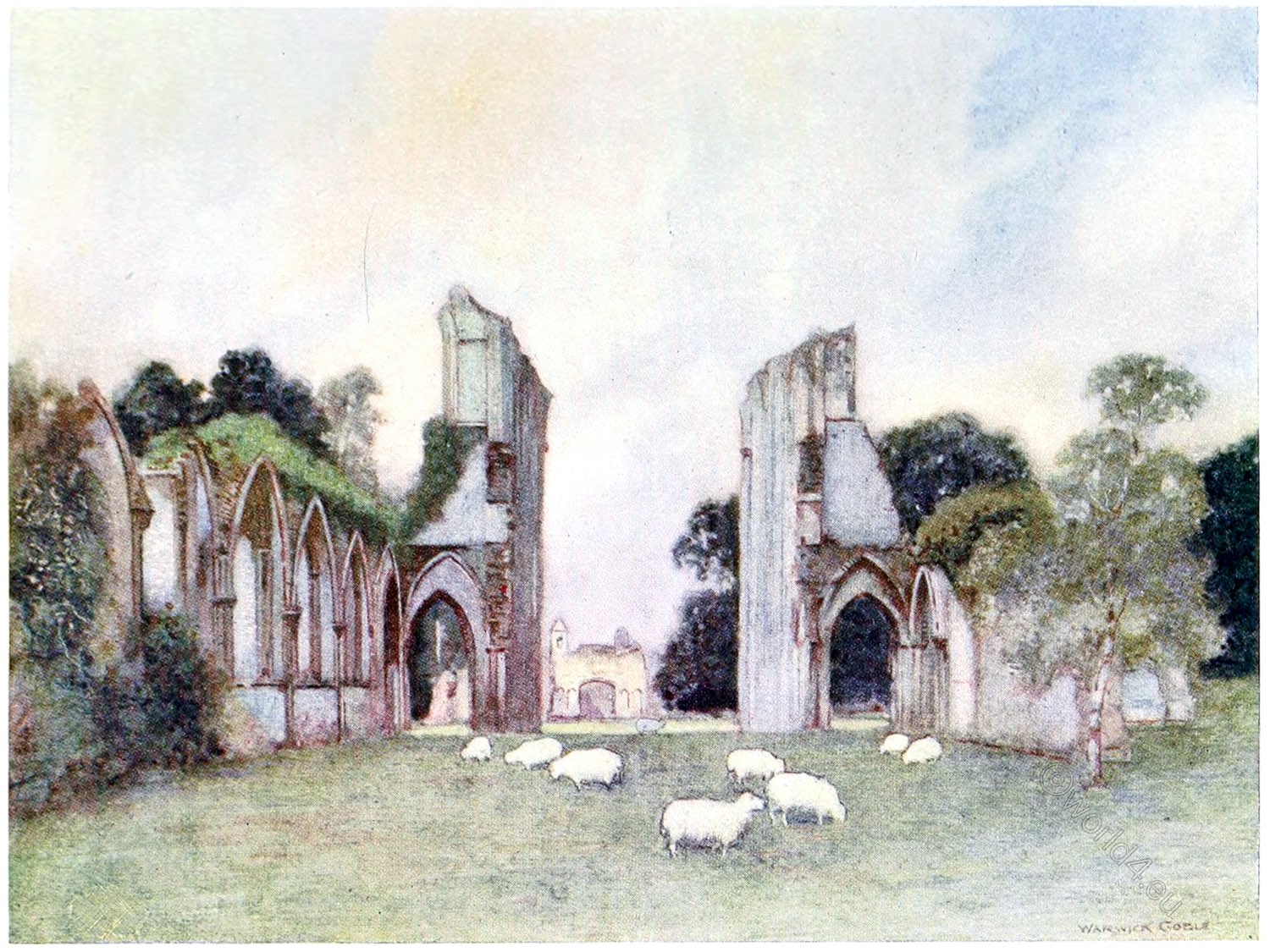
TINTERN ABBEY.
Tintern Abbey (Welsh: Abaty Tyndyrn) is a ruined monastery in the Wye Valley of Wales near the village of Tintern. It was the first Cistercian monastery in Wales and the second oldest in Britain. The monastery was dissolved in 1536. Since then, the abbey fell into disrepair until it was rediscovered as a tourist destination at the end of the 18th century, during the Romantic era.
THE taste displayed by the “monks of old” in the selection of localities at which to erect their monastic establishments was perfect. Whatever might have been the extent to which they carried their individual mortifications, there is no doubt that the shutting of the eyes to the beauties of nature formed no part of such mortification, for, as a rule, establishments of this kind are invariably found situated amid scenery of the most charming and attractive nature. And such is Tintern Abbey.
Ensconced in a sheltered valley on the western bank of the river Wye, Tintern seems the very embodiment of an abode of religious peace and retirement, in which man might enter into the most intimate communion with nature. It was founded by Walter de Clare, in 1131, or about three years after the Cistercians or White Monks, a branch of the Benedictine order, made their appearance in England; hence of the various Cistercian abbeys in this country, that of Tintern is one of the oldest. It was dedicated to St. Mary.
The monks of Tintern came from L’Aumône Abbey, a daughter monastery of Cîteaux Abbey, the place of origin of the Cistercian Order. The community grew rapidly, and as early as 1139 a daughter house was founded in Gloucestershire (Kingswood Abbey). In 1200 or 1203, another foundation followed in Ireland (Tinternparva Abbey). The first monastery buildings were completed in 1136. Only a few remains of these buildings still exist, as the abbey was expanded and rebuilt several times over the centuries. The main part of the ruins preserved today date from the second half of the 13th century. At that time, Tintern Abbey had considerable income from land ownership on both sides of the River Wye.
The church, of which an interior view is here presented, is considered to be an excellent specimen of pure Gothic architecture, and unsurpassed in respect of the lightness and elegance of its structure, or of the delicacy of its ornamentation. Mass was first celebrated in the church in October, 1168, at which time the building had not been quite completed, this only having been accomplished in the beginning of the thirteenth century. Of all the archaeological remains of a similar kind, Tintern Abbey is probably the most familiar to the public.

The adjacent scenery, replete with all those elements which conduce to attract, the wooded and sloping banks of the Wye, the rugged cliffs, the solitude and grandeur of the surroundings, render this a spot dear to the tourist; while of those who have never visited the locality, the pencil of the artist and the camera of the photographer have aided in making them, in some degree, acquainted with a pile which, in respect of romantic and picturesque associations, as well as of elegance of structure, has few compeers.
After the establishment of the Anglican State Church by Henry VIII, the monastic order of Tintern Abbey was forced to dissolve the monastery. On September 3rd, 1536, the last Abbot Wyche handed the monastery over to the Crown. At that time the community consisted of the abbot, 12 monks and 35 servants. Despite its small size, Tintern was the wealthiest monastery in Wales. The valuables were given to the royal treasury and the buildings were granted to Henry, the Second Earl of Worcester. He had the lead roof removed, leaving the abbey to decay.
After the abandonment of the monastery, Tintern fell into oblivion. At the end of the 18th century, however, the unspoilt regions of Britain became popular destinations. The valley of the Wye was praised by the Romantics for its picturesque scenery. After the Reverend William Gilpin published the popular guidebook Observations on the River Wye in 1782, the ruins of Tintern were visited by tourists in droves. The then owner of Tintern, the Duke of Beaufort, began careful conservation of the ruins.
It is situated in Monmouthshire, about nine miles to the south of Monmouth.
John Traill Taylor (1827-1895)
Source: Treasure spots of the world: a selection of the chief beauties and wonders of nature and art by Walter Bentley Woodbury (1834-1885); Francis Clement Naish. London: Ward, Lock, and Tyler, Paternoster Row, 1875.
Related
Discover more from World4 Costume Culture History
Subscribe to get the latest posts sent to your email.






